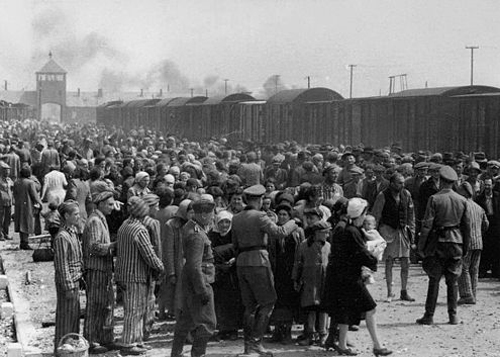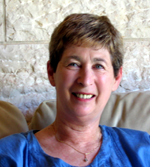
A Curious Coincidence and a Visit to Yad Vashem
By Dorothea Shefer-Vanson

JERUSALEM — The anniversary of the Pogrom of 9th November 1938, otherwise known as Kristallnacht, the Night of Broken Glass, is marked every year by Jews all over the world. It is not a religious occasion, but does nevertheless serve to unite Jewish communities in recalling the horrors of the Holocaust as exemplified by that one occasion in which over 1,700 synagogues and prayer rooms all over Germany and Austria were burned, pillaged and destroyed. Thousands of Jewish businesses were damaged, and Jewish men were arrested and sent to concentration camps. The coordinated and violent effort to destroy the basis of Jewish life in Germany served as the ultimate wake-up call for the Jewish population there, and triggered the emigration of those Jews who were able to do so.
Every year Israel’s Association of Jews originally from Central Europe (i.e., mainly Germany, Austria and Czechoslovakia) organizes a memorial service to mark the event, and this is held at Yad Vashem, the Holocaust Memorial in Jerusalem. When my parents were alive they would attend this event, but I had other concerns and never found the time to go. This year, however, I decided to participate, and I found myself in the company of many people like myself, the Second Generation of Holocaust survivors, as well as a class of teenagers who had come from one of Israel’s schools.
The programme of the event was long and varied, starting with a brief service and wreath-laying ceremony in the Hall of Remembrance, and followed by a series of talks and lectures by actual Holocaust survivors as well as scholars and writers talking about specific aspects of that time. One particularly interesting lecture described the work of Charlotte Salomon, whose paintings depict her life, first in Berlin and then in the south of France, where she was eventually captured and then deported to Auschwitz. I knew about her work, having seen it in London several years ago and even have the very detailed catalogue of it, but it was nonetheless moving to hear Judith Shendar, the art curator at Yad Vashem, talk about the artist’s life and work.
In between the various lectures singer Shuli Natan went up on stage with her guitar and played and sang. It was Shuli Natan who made Naomi Shemer’s song ‘Jerusalem of Gold’ famous in the period around the Six Day War of 1967, and her voice is still strong and moving, albeit an octave or two lower now. The singer told the audience that her family was originally from Hamburg (like mine), having emigrated there in the sixteenth century to escape the Inquisition in Portugal. She ended the occasion by playing that self-same song, this time with the audience’s participation.
I used the opportunity, once the event was over, to visit the Yad Vashem library, having learned from reading the joint autobiography of Serge and Beate Klarsfeld, that there were lists of Jews deported to concentration camps by the Nazis in German-occupied France. A few years ago I learned that my mother’s aunt and uncle, Hedwig and Jacob Hirsch, and their three grown-up sons, Sami, Rudi and Kurt, had fled from Germany to France but had all disappeared there. Nothing was known about what happened to them but by a curious coincidence several years ago I met an elderly lady, a painter whose name I have unfortunately forgotten, who told me that she had been engaged to one of them (Rudi, I think), and that they had maintained contact while he was in France and she was in hiding in the Netherlands. She was eventually captured and sent to Theresienstadt, but survived and eventually moved to Israel. I met her (in 1990) at a concert given at Yad Vashem to commemorate the musicians who had been active in Theresienstadt. Because my paternal grandmother had been sent there from Hamburg, and also perished there, I have a special interest in that place.
I gave her a lift from Yad Vashem (who isn’t going to pick up an elderly lady on crutches who is hitch-hiking?) and we agreed to meet for coffee in town. While we were chatting about art and painting and such I happened to mention that one of my relatives, Joseph (‘Boujik’) Hirsch was a fairly well-known artist in Israel, whereupon she exclaimed ‘I was engaged to his cousin!’ That was Rudi, and from her I learned what a wonderful person he had been, and how confident he and his family had been that they would survive the war. My mother and other relatives had also told me about that family and what a terrible loss their passing represented for the family. That lady died a few years ago and I have no way of finding her name.
With the help of one of the librarians at Yad Vashem I traced the documents detailing the route taken by the three brothers, separately from their parents, as the Germans kept detailed lists of all those deported. And so, from the hundreds of pages giving the names, date of birth, place of birth and occupation of each person in every Transport I now know that on 10th August 1942 Sami, Rudi and Kurt Hirsch, aged 31, 26 and 22 respectively, were put on Transport no. 17 from Gurs to Drancy, and thence to Auschwitz, and that their parents, Hedwig and Jacob, aged 54 and 57 followed the same route in Transport no. 40 on 3rd November that year.
May their memories be blessed.
*
Shefer-Vanson is an author and freelance writer based in the Jerusalem suburb of Mevasseret Zion, Israel. She may be contacted via dorothea.shefer@sdjewishworld.com